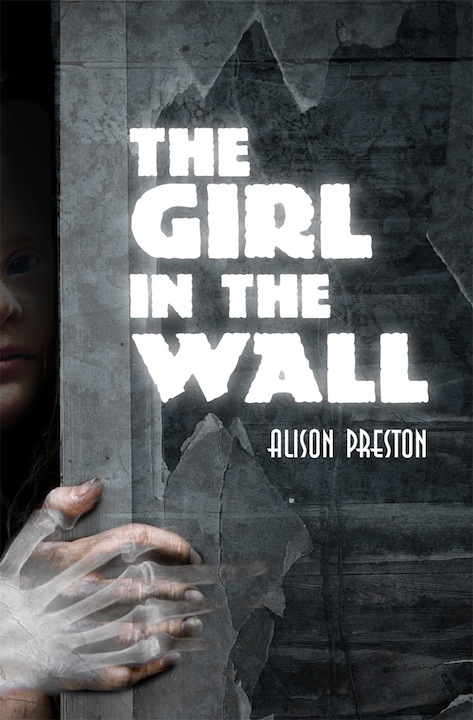
About the book
- Winner of the Margaret Laurence Award for Fiction
After leaving the Winnipeg Police force, former Inspector Frank Foote has gone into home renovations. Tearing down a wall on a Norwood Flats job one day, he and his partner come across the skeleton of a small female who has been imprisoned there. They alert the police, who confiscate their tools and remove them from the crime scene. Frank doesn’t tell them about the photograph he’s found tucked in the wall space with the young woman. He may be retired, but his investigative instincts are still strong. Tracking down the identity of the girl leads Frank into the past and down the trail of the long-forgotten Mrs. Mortimer, who’d had a short-lived business in the 1960s taking photos of the recently deceased for their families. Frank finds himself hoping against hope that she isn't involved. But what are the odds?
About the author

Alison Preston was born and raised in Winnipeg. After trying on a number of other Canadian cities, she returned to her hometown, where she currently resides. All of her books are set in the Norwood Flats area of Winnipeg, including The Rain Barrel Baby, The Geranium Girls, Cherry Bites, Sunny Dreams, and The Girl in the Wall.
A graduate of the University of Winnipeg, and a letter carrier for twenty-eight years, Alison won the Margaret Laurence Award for Fiction for The Girl in the Wall and has been twice nominated for the John Hirsch Award for Most Promising Manitoba Writer, following the publications of The Rain Barrel Baby (Signature Editions) and her first novel, A Blue and Golden Year (Turnstone Press). She was also shortlisted for the Carol Shields Winnipeg Book Award and the McNally Robinson Book of the Year Award for Cherry Bites and the Mary Scorer Award for Best Book by a Manitoba Publisher for Sunny Dreams.
Visit Alison’s website at: http://www.alisonpreston.com
Excerpt
Behind the drywall were layers of mortar and cracked plaster covering wood lath. In some spots the lath had pulled away from the framing behind it. Someone had tried to repair it.
“I like this ripping-down phase,” said Frank.
“Not me,” said Jane. “It’s my least favourite part. I like getting to the stage when we start building new stuff.”
“Hey, wait a sec,” Frank said. “What’s this?”
His arm was out of sight up to his shoulder in a hollow space behind a destroyed sheet of dry wall.
“Just a minute. I can’t quite get it.”
He tore away some more of the outer wall, reached in and brought out what looked to be a photograph. He took off his mask and blew on the item and then wished he hadn’t as he coughed away the dust and sneezed four times.
“What are you up to over there?” Jane asked. “Do I need to call an ambulance?”
Frank sneezed one last time.
“I’ve found something interesting.”
He took a clean white handkerchief out of his back pocket and carefully dusted off the picture. It was in faded colour, unframed and curled at the edges. It was bigger than an ordinary snapshot, perhaps five by seven.
“What is it, Frank?”
“It’s a photograph.”
“Let’s see.”
Jane took off her gloves and whapped them on the side of her leg.
“Hmm. It looks kind of sixtyish,” she said.
There was a man, two women, a boy and a girl. And they did look like their time was the sixties or early seventies, with their tie-dyed T-shirts and long flowing hair, even on the man. The women and girl sat on straight-backed chairs, the man behind them, standing. The boy stood beside the girl with his hand gripping her shoulder.
“Are they wearing costumes, do you think?” asked Jane. “Or…”
“It looks like a pose for an album cover.” Frank interrupted. For a group with a girl singer or two.”
Jane put her gloves back on.
“I’ll leave you to it. I want to get this part over with today.”
She went back to her job and Frank continued staring at the photograph.
“Could you please turn the music down, Jane?”
Frank’s head was starting to hurt and he no longer liked the songs. There was too much death in the lyrics.
Jane turned it off.
“Are you all right, Frank?”
“I don’t know. There’s something weird going on in this picture.”
“What kind of weird?”
“The little girl might not be alive.”
“What do you mean?”
“I mean, I think she was dead when this was taken.”
“What the hell are you talking about?”
Jane set down her crowbar and walked over to where Frank was sitting on a crate with the photograph held gently in his hands. She peered over his shoulder.
“Look at her eyes,” Frank said.
“Odd.”
“Very.”
Jane pulled up another crate and sat down beside him, taking a closer look.
“I think everyone else is alive,” she said.
“Yes.”
“It’s her eyes that give her away, but I’d like to see this in a better light.”
“Yes.”
They looked at each other for a moment and then back at the picture. Frank turned it over. There was writing on the back, too faded to read. It looked like it had been written in pencil. A capital L for sure, and maybe a capital D, and 19 something, a date perhaps.
“I can probably get someone at work to figure out what this says.”
“You’re retired, Frank. You don’t go to work anymore.”
“I still have people there.”
His words sounded petulant to his own ears.
Jane stood up.
“Okay. You try to figure out what it says. And I’ll go to the library and find out who all has lived here.”
Frank suspected that she was humouring him, that she had no intention of going to the library, but he decided to try to take her words at face value and dismiss his mistrustful feelings.
“It’s no big deal,” he said, as he set the picture down carefully in a safe spot away from their activity. “Featherstone probably already knows who all lived here. We could just ask him before you go trudging off to the library. I wouldn’t be surprised if he turned up today while we’re still here.”
They went back to work.
“Garth has a powerful magnifying glass at home,” Frank said, mostly to himself. “Maybe it will do the job of deciphering the words.”
“Maybe,” said Jane.
With a creaking rip Frank tore down the last of the drywall on the north-facing side of the house.
“Jesus Christ Almighty,” he whispered when he saw what was stashed behind it.
Book club guide
Reviews
“
Winnipeg’s Alison Preston is becoming one of Canada’s most consistently good crime writers. The Girl in the Wall, her fifth novel, is as funny and smart as the last four, but it takes plotting to a new high.
“Morven…” >>
— Margaret Cannon The Globe and Mail
“According to author Alison Preston, strange things happen even in quiet suburbs. In fact, her sixth novel spins such a tale. Winner of the 2012 Margaret Laurence Award for Fiction, the book recounts the story of an eccentric young woman…” >>
— Bev Sandell Greenberg Prairie Fire Review of Books
“Winnipeg's Alison Preston returns with a new mystery, another entertaining expose of evil doings in the seemingly quiet Norwood Flats. This one finds her favourite character, Frank Foote, in mid-life-crisis mode, which contrasts nicely with the mawkishly humorous goings-on.
…” >>
— Dave Williamson Winnipeg Free Press
“Alison Preston of Winnipeg is unique among crime writers for a couple of reasons. And, no, being from Winnipeg is not one of them.
Preston must surely be the only author of crime fiction who spent 28…” >>
— Jack Batten, Whodunit Columnist Toronto Star
“A down-home style makes The Girl in the Wall an irresistible treat. The protagonist, former Inspector Frank Foote of the Winnipeg Police Force, along with a new partner in a home renovation business, find a skeleton of a young female…” >>
— Don Graves The Hamilton Spectator











 Back to top
Back to top